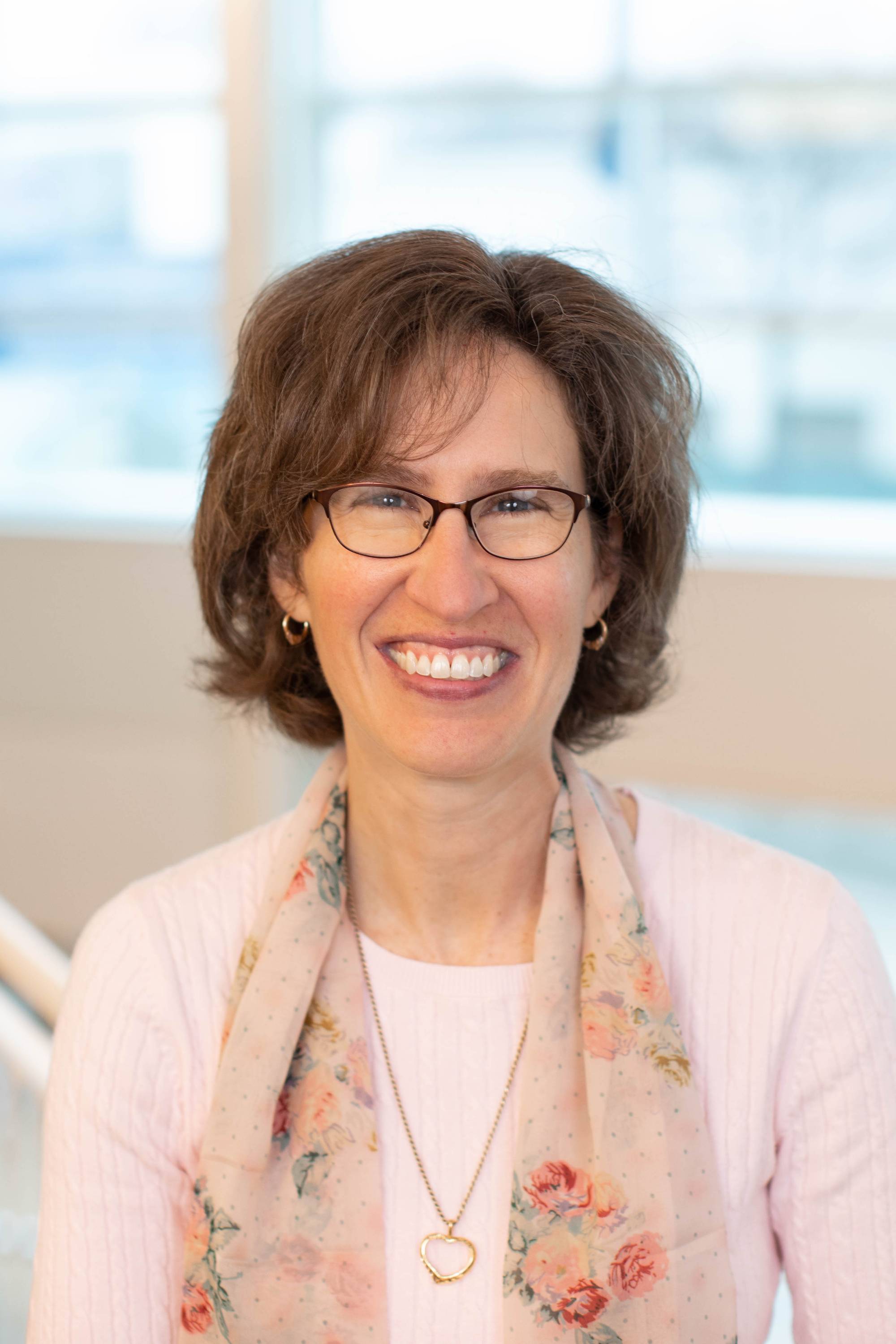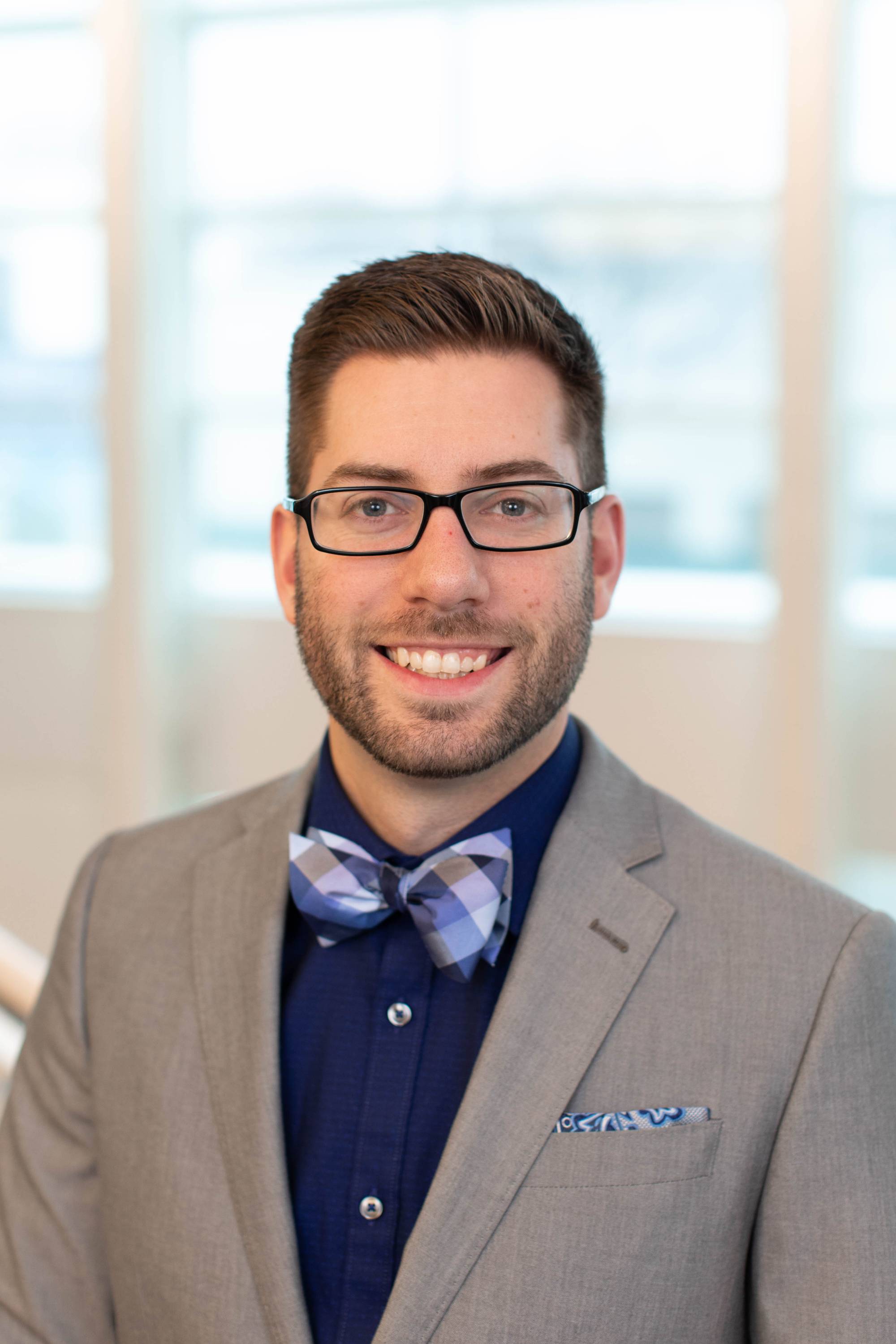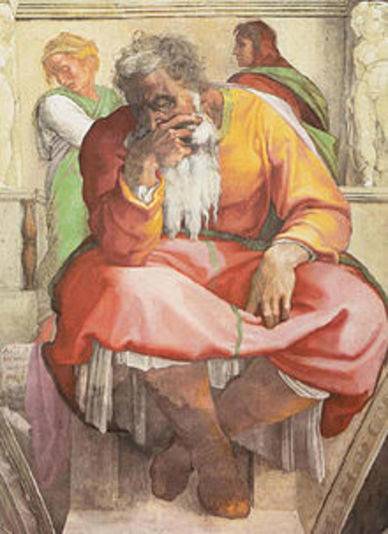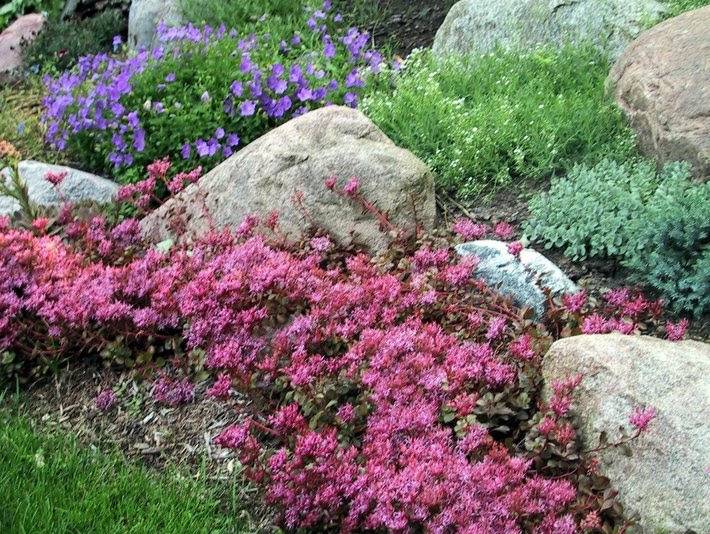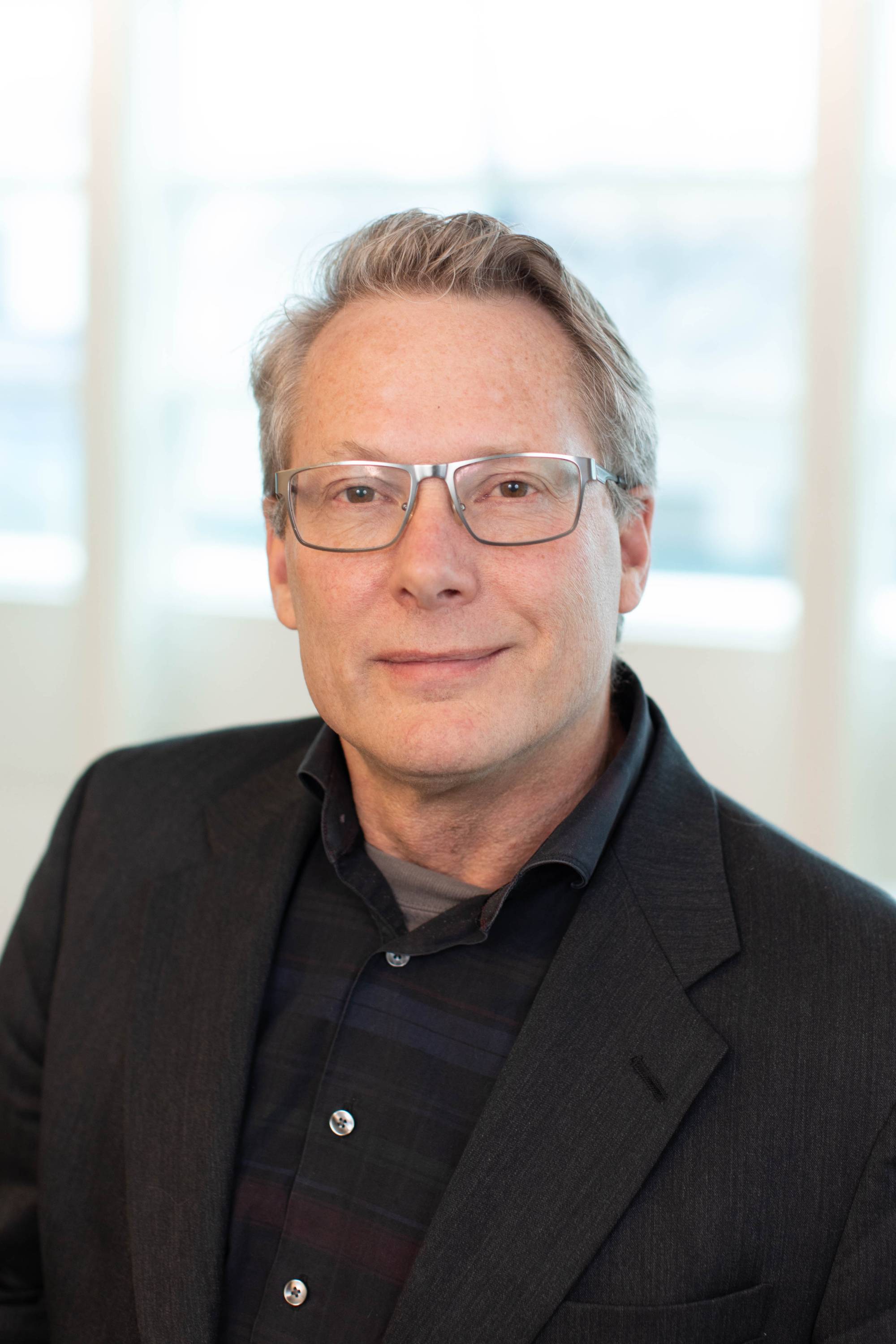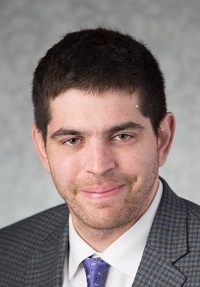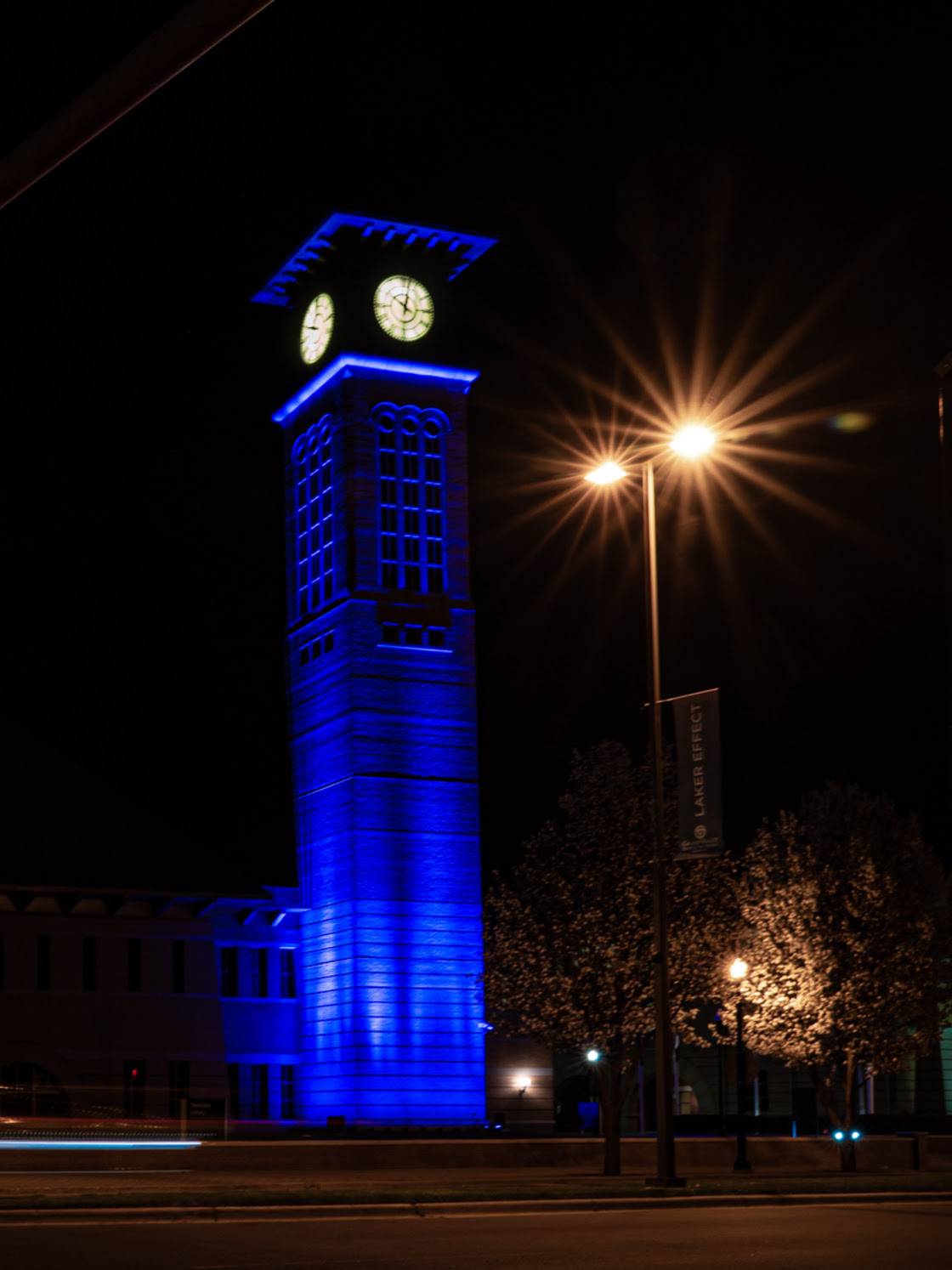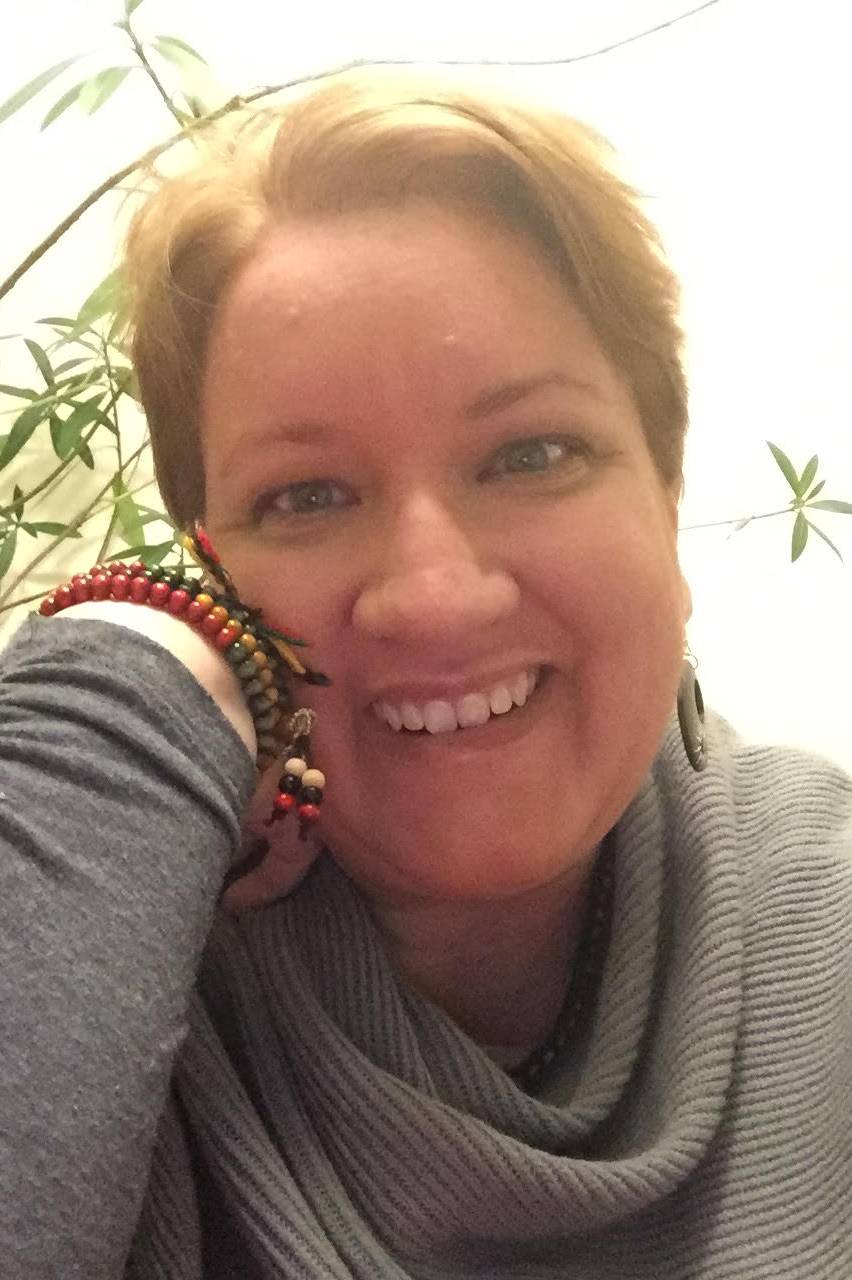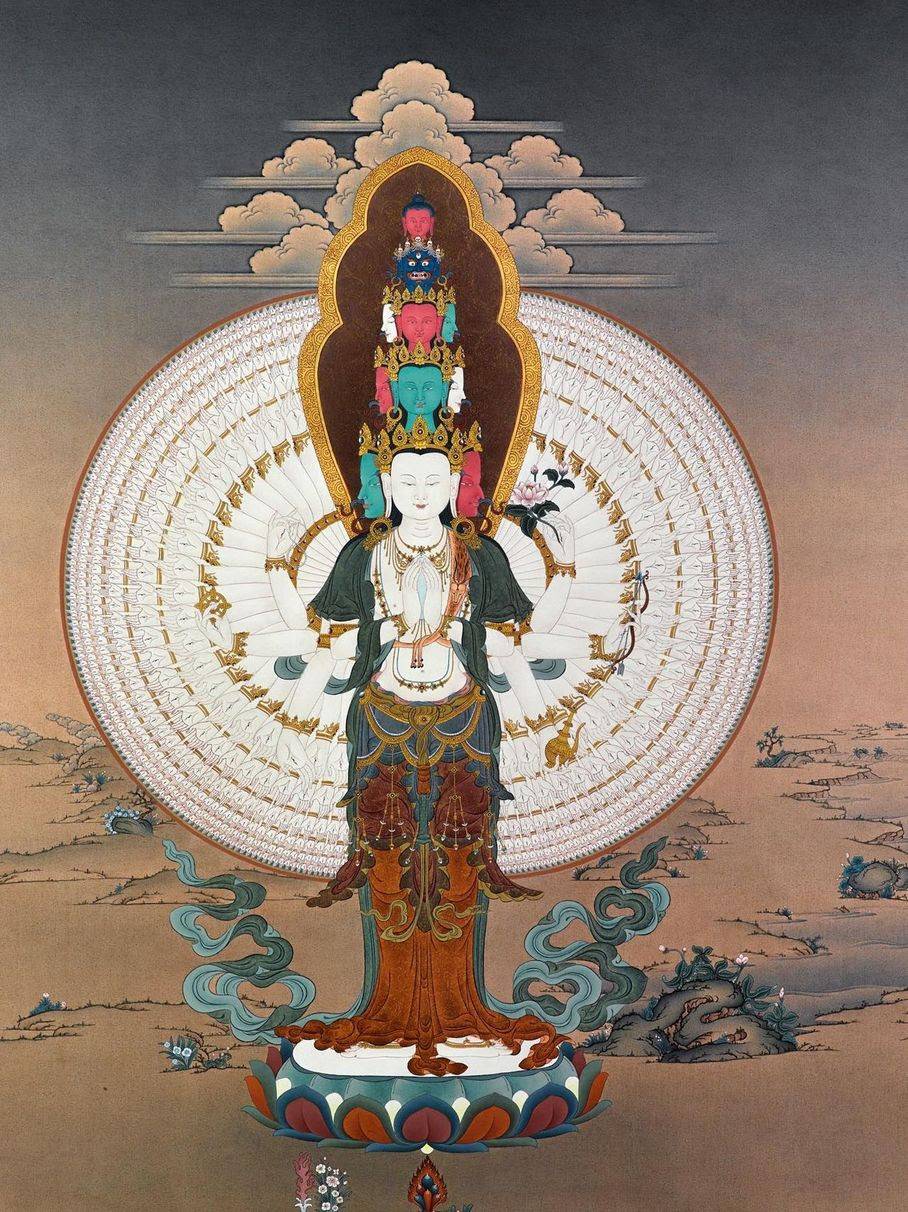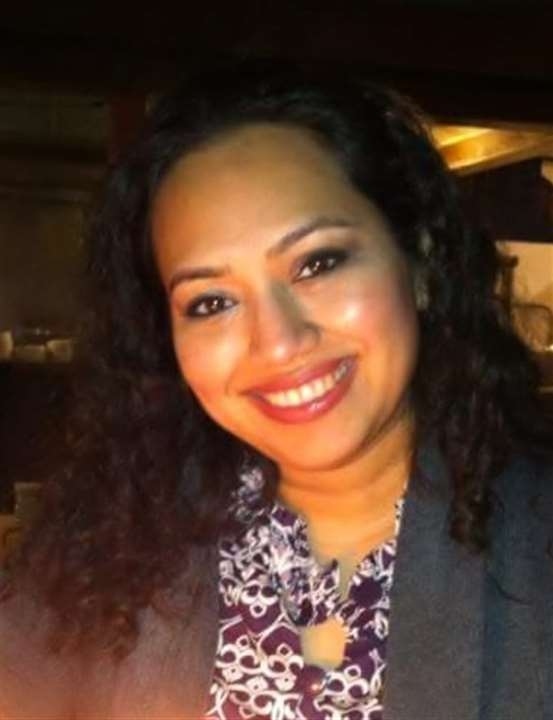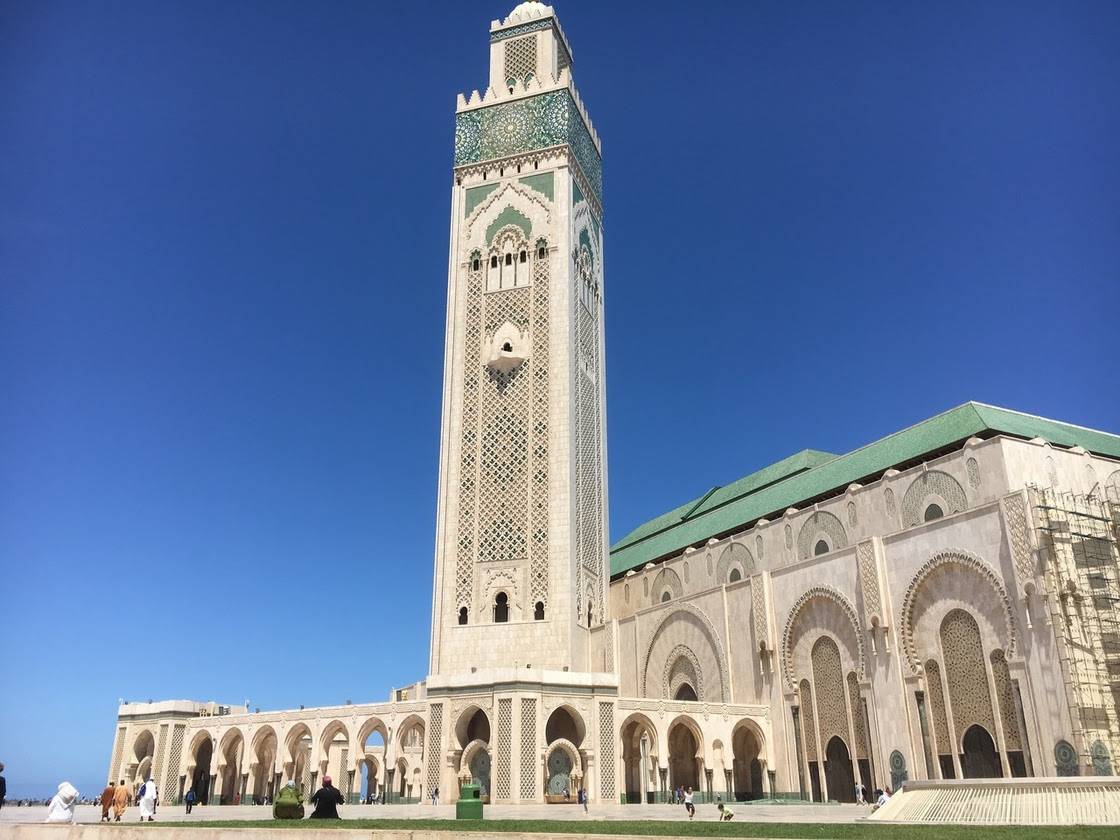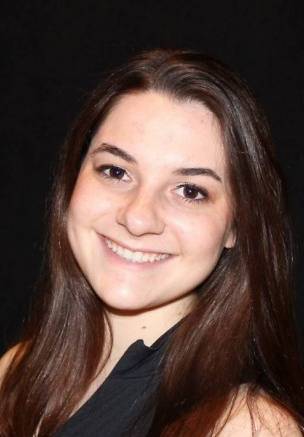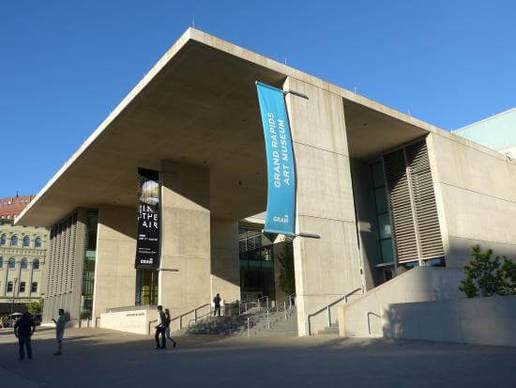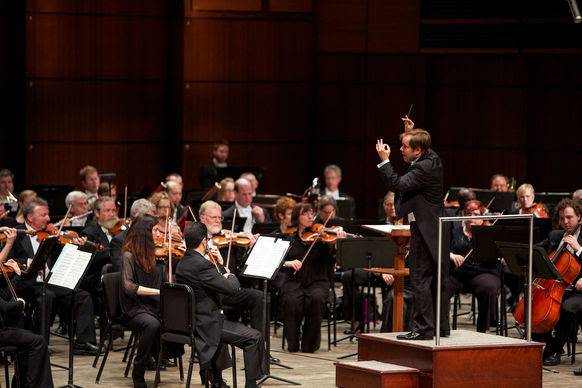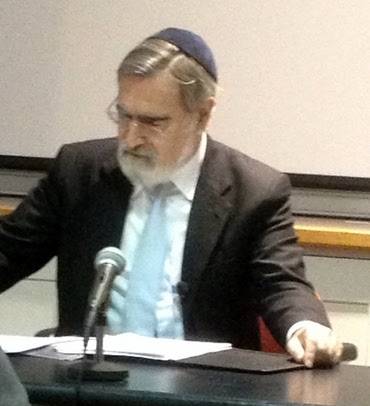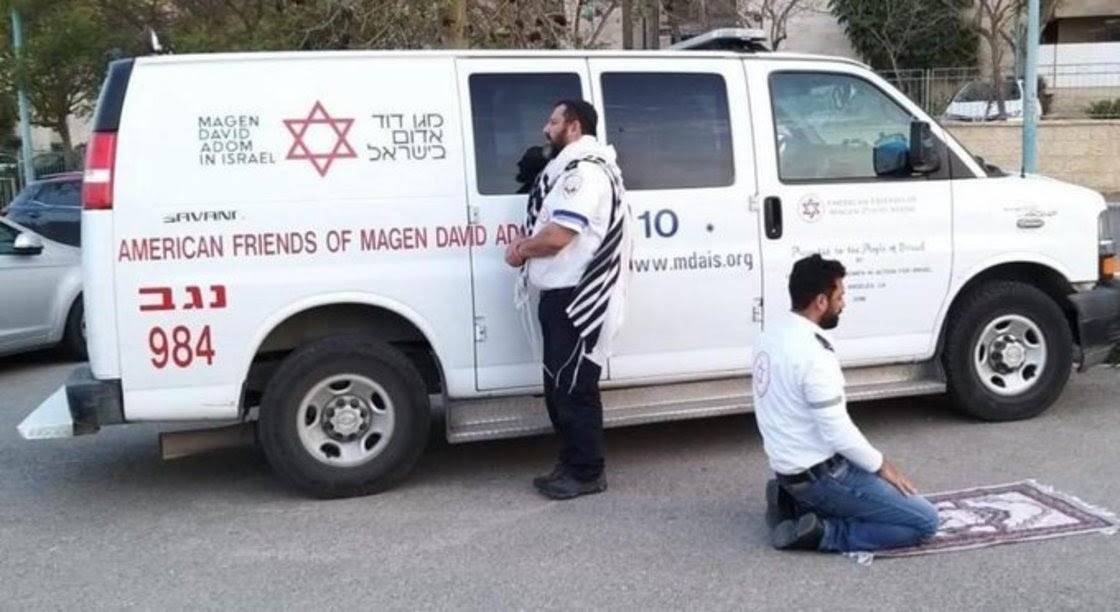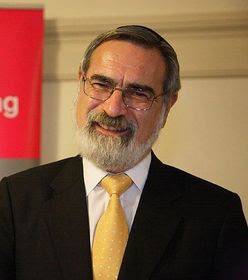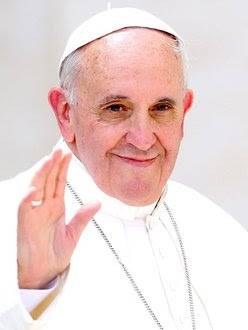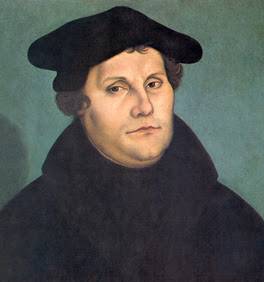Interfaith Insight - 2020
Permanent link for "Finding hope in the pandemic" by Sue Spears on May 26, 2020
We welcome Sue Spears as we continue our series from the
Kaufman Interfaith Institute staff. As the Office Coordinator, Sue
keeps, not just the office, but all of us staff coordinated. You
could say she provides the glue that holds all of the events,
projects, internet, publicity, budgets, etc. together. Sue has a
Masters in Social Work and has worked at Grand Valley State
University since 2007.
This completes the series from the Kaufman staff and I trust
you have seen the variety of beliefs and perspectives that we each
bring from our Jewish, Muslim, Buddhist, and various Christian
perspectives. We are a microcosm of our increasingly diverse society
and as such we work together and respect each person as we journey
toward truth and acceptance. Doug Kindschi
Fear and anxiety. They are everywhere today. On the faces of
those without a mask; in the eyes of those with a mask. I see in
these faces a lack of hope and my heart hurts. I want to say, “Don’t
be afraid! Don’t worry! Let me share with you the source of my hope!”
I’ve been a Christian since the day, as a little girl, when I
understood that my sin separated me from God and reconciliation was
only possible by accepting the free gift of salvation offered through
His son, Jesus Christ’s death on the cross. Christianity is, at its
essence, a relationship. A relationship with the God who has created
all things, who loves me, and who holds all of my days in his hands.
If I truly believe that God is sovereign and that His purposes
will be realized – I don’t worry. I can’t worry. Instead, I choose
to rest in the hope that God brings to those who trust in Jesus. John
Piper, founder and senior teacher of www.desiringGod.org, and chancellor of Bethlehem
College & Seminary in Minneapolis, wrote a short book several
weeks ago: “Coronavirus and Christ.” In this book, Piper writes that
the secret to trusting, to resting, to living free of fear and worry
is “knowing that the same sovereignty that could stop the coronavirus,
yet doesn’t, is the very sovereignty that sustains the soul in it.”
That statement fills me with a sense of peace and hope. It
strips me of the natural bent to worry, replacing this with the wonder
of knowing that the God who is sovereign over all things, the God that
I choose to trust in, is in control over this virus. This is not
something that has happened outside of His knowledge or purpose, but
as PART of these purposes. It’s not a random happenstance. As hard
as it is to make sense of it, there is a reason for all that happens
in our lives, including this virus. The Bible tells the story of Job,
a righteous man who underwent tremendous suffering as God allowed
Satan to test his faith. And yet Job says in Job 13:15, “Though he
slay me, yet will I trust in Him.” And in later in Job 42:2, “I know
that you can do all things, and that no purpose of yours can be thwarted.”
As humans, we have a natural desire to control. We want to make
plans! Yet trials have a way of stripping from us the control we so
desperately try to hold on to, and we see clearly how little in
control we really are. As summer grows closer, we are challenged with
the uncertainty of knowing what these upcoming months will look like.
Will we be able to take that vacation that was planned months ago?
Send our child to his favorite camp? Have friends over for BBQ’s and
pool parties? Enjoy days at the beach? Attend picnics and family
reunions? We hope to do all of these things, but we really don’t know
if we will be able to. It’s out of our hands; out of our control.
And we don’t like that. I don’t like that. So I remind myself daily
that God is in full control and take comfort in that. I choose to
trust Him.
As a Christ-follower, I don’t want to waste time; I want to
redeem time. I want to find ways to make good out of what seems bad
right now. I want to encourage people not to worry and to share with
them the source of my hope. I want to reach out to friends and family
who I’m not able to connect with regularly, in a small way trying to
reignite those relationships that have been so dear in various seasons
of my life. And if I do suffer, I want to “suffer well.” Romans
5:3-5 says, “We rejoice in our sufferings, knowing that suffering
produces endurance, and endurance produces character, and character
produces hope, and hope does not put us to shame, because God’s love
has been poured into our hearts through the Holy Spirit.”
Working in an interfaith office is, for me,
eye-opening, faith-growing, and heart-challenging. It keeps me “on my
toes.” I have learned much about the faith traditions of my
colleagues, and I enjoy watching now how these traditions bring each
of them comfort. I understand that while we have many marked
differences in opinions and beliefs regarding issues of faith, I can
respect these differences and ultimately, each individual as a person
uniquely created by God.
Philippians 4:6-7 says, “Do not be anxious about anything, but in
every situation, by prayer and petition, with thanksgiving, present
your requests to God. And the peace of God, which transcends all
understanding, will guard your hearts and your minds in Christ
Jesus.” Jesus is the source of my hope. As I trust Him and His
purposes today, even in the midst of this virus, I am comforted. I am
grateful for the peace that keeps me from despair. May we each reflect
upon where, in the midst of this virus, we find our hope
Posted on Permanent link for "Finding hope in the pandemic" by Sue Spears on May 26, 2020.
Permanent link for "Amidst a pandemic, invest in the unknown" by Kyle Kooyers on May 19, 2020
We welcome back Kyle Kooyers, as we continue our series from the
Kaufman Interfaith Institute staff. Kyle began working at the
Kaufman Interfaith Institute while a graduate student at Calvin
Theological Seminary, and then joined us full-time as Program
Director upon completion of his Master of Divinity degree. Last
summer he was appointed Associate Director.
Martin Luther is often credited with the saying, “Even if I knew
that tomorrow the world would go to pieces, I would still plant my
apple tree.”
Perhaps as the weather has begun to warm, you like many of my
neighbors have made your way outside to garden, plant, or landscape as
a means of catharsis during this Covid-19 season of social distancing.
For a number of reasons, I too see planting as a beautiful practice
during times of uncertainty, frustration, and fear.
There’s an aesthetic element in which we are working to beautify
our space, finding a centering in something within our control. There
is a grounding element as we connect with the richness and life found
in the dirt of the earth. And there is a hope element as we invest in
something that will blossom and yield in a future that may be
difficult to imagine.
That notion of hopeful investment in spite of the present has
always fascinated me. The prophetic texts of the Hebrew Scriptures are
full of accounts where someone does something simply because it stands
in contradiction to the situation or reality they are facing. One such
example involving the Prophet Jeremiah comes to mind.
To set the stage, the city of Jerusalem is under siege by a
massive army. The people of Israel are about to be captured and taken
to Babylon. The world is literally falling apart around them. All of
the things they loved to do, the plans they had looked forward to,
their jobs and routines, the closeness of family and friends was
suddenly taken away.
Amid all of this chaos and uncertainty, Jeremiah, who is
effectively in prison for peaceful protest, receives a divine message
that his cousin is about to offer him the opportunity to buy some
land. Sure enough, his cousin Hanamel comes along and asks if he will
purchase a field. So Jeremiah buys that field from his cousin, but he
does so in the most official way possible. He pays 17 shekels of
silver, signs two purchase deeds, and has the transaction witnessed
and seen by all of the people who are sitting around him. The deeds
are then given to his friend, Baruch, who places them in earthen
vessels so they would be maintained for a very long time.
But this makes absolutely no sense! On the level of property
value alone, it is a ludicrous investment. Jerusalem is under siege
and the people of Israel are about to be carried off into exile. The
land is about to be taken from them.
This purchase of land, this investment in the dirt is an embodied
prophecy, a peaceful resistance to the idea that terror and
destructive power will have the final word. It is a message that one
day this very ground will see healing and prosperity. This action of
hope ought not to be confused with a mere denial of the present
situation, bleak as it may be. In this seemingly non-sense prophecy,
Jeremiah literally invests in the hope of a future, a new reality,
precisely at a time when that future seems utterly impossible, perhaps unimaginable.
For those living, or better, surviving, in the grip of captivity,
disenfranchisement, oppression, or in the midst of a global pandemic,
a message like this would seem like nonsense. But, at the heart of
Jeremiah’s prophecy is both the acknowledgment of the present darkness
and a bold move towards a future beyond it. This is not blind
optimism. This is the action of hope in which Jeremiah acknowledges
despair and still proclaims that peace, justice, and healing are possible.
I recently watched Jimmy Fallon’s interview with renowned
researcher, professor, and author Dr. Brené Brown, on “The Tonight
Show.” Dr. Brown discussed how to navigate the vulnerabilities
associated with being in a situation for the first time – like a
pandemic. She offers three helpful approaches:
• Naming that this is the first time we have encountered
something like this.
• Taking the perspective that this will not last forever and will
end at some point.
• Keeping our expectations in check since nothing is going to go
as we planned.
For Dr. Brown, even with the despair and disillusionment of
Covid-19, there is still potential for the future. She says, “I know
for sure that we will have a huge opportunity to be better than before
we went into it. I know for sure that a crisis like this shines a
light on fault lines in our community, in our families, in our
country, in our services, and we are seeing that. We are seeing
disproportionately affected people.”
With an eye towards the unknown, Dr. Brown remarks, “We will have
an opportunity as we come out of this to say, ‘You know what, we will
not let this continue, this is not who we want to be as a country.’”
This is a true portrait of hope in the face of deep pain and
immense loss. There are no easy answers. There are no platitudes or
clichés to make it all go away. The suffering is real and the hurt is
deep. Yet there is also an invitation – that we too might buy up
fields in hopeless places and fill up our own little jars that
something better is one day to come.
For some, like my neighbors, it looks like planting flowers or
vegetables. For some it looks like sewing masks or donating to a local
food pantry. For some it looks like confronting head-on the systematic
disparities and inequities amplified by this virus. For some it looks
like walking 2.23 miles in the hope of justice for Ahmaud Arbery. For
some it looks like taking up a new hobby or returning to one for the
first time in years. For some it looks like mustering just enough
strength to sit up in bed and face the day.
Dr. Brown concludes, “I think for sure we will have an
opportunity to be better and I hope we seize it. I know there will be
more trauma coming out of this especially for those of you in the
epicenter, there will be more trauma than we expect. And I know we are
stronger than we think.” For all of us, hope means reentering and
reimagining the routines and rituals we used to do, learning how to
love and stay connected to people who are now at a distance. Moreover,
hope looks like practicing neighborliness in new ways, offering
patience, kindness, and understanding as together we invest in the
unknown – a better future for all.
Posted on Permanent link for "Amidst a pandemic, invest in the unknown" by Kyle Kooyers on May 19, 2020.
Permanent link for "Love in a time of pandemic" by Kelly James Clark on May 12, 2020
We welcome back Kelly Clark, as we continue our series from the
Kaufman Interfaith Institute staff. Kelly has led grant-funded
international projects developing interfaith conferences and writing
with contributions from Jewish, Christian, and Muslim scholars from
over 10 countries, primarily in the Middle East. He is the author or
editor of over 20 books including his recent book, “Stranger,
Neighbors, Friends,” that is the focus of two current online book
group discussions.
When I was a little boy, in the early 60s, my father directed The
Community School at Lincoln Elementary School in Kalamazoo. Lincoln
School was in Kalamazoo’s predominantly black north side, literally
just over the tracks from Kalamazoo’s predominantly white south side.
My brother and I spent a lot of time at Lincoln school — every weekday
in the summer and, during the school year, at least one evening a week
and most Saturdays. We played basketball, raced around, took swimming
lessons, and just hung out with Charlie and Leroy and Debbie and
Jimmie and Earl and Curtis and countless others. It was a magical
place to grow up.
While I was aware of the substantial white-black differences in
housing and clothing, I wasn’t aware that all U.S. cities were deeply
segregated ensuring a life of poverty for most black people. I do
remember the north side’s joyous celebration when the United States
finally passed the Civil Rights Act in 1964.
I would only later hear that the north side was the ghetto (like
a zoo for black people), and that blacks were suited to slavery and
poverty. I recall hearing a host of dehumanizing names, names that
“justified” white people’s historic mistreatment of blacks.
I remember taking a Boy Scout camping trip to northern Michigan
and having to drive through the north side. Before we crossed the
tracks into the north side, our driver, one of the dads, insisted that
we roll up our windows and lock our doors and not look anyone in the
eye because, he said, you don’t know what they might do. I recall his
relief when we had safely passed through the threatening north side.
I remember thinking, “How can he say this? He doesn’t know
Charlie and Leroy and Debbie and Jimmie and Earl and Curtis, and
countless others.”
Charlie, by the way, would go on to earn his Ph.D. and become
Magic Johnson’s agent; Leroy a prominent educator in Grand Rapids;
Jimmie a distinguished Navy veteran; Debbie a devoted teacher of young
children; Earl a vice president at Upjohn; and Curtis a boxing coach
who teaches impoverished children the meaning of discipline and
success. And countless others.
But fear closed my driver’s windows and doors, preventing him
from seeing Charlie and Leroy and Debbie and Jimmie and Earl and
Curtis and countless others as individual human beings like him, with
hopes and dreams for a better future.
He saw Charlie and Leroy and Debbie and Jimmie and Earl and
Curtis and countless others as just “one of them” — less than fully
human, living in their self-imposed ghetto.
But he is not alone.
Fear, I’ve come to learn, does that to all of us.
It not only makes us think the worst of others, it makes us blame
and scapegoat others. And if we can blame “them” for crime, say, or
drugs, then we can “justify” harming them.
Sadly, though it is four-plus decades since the Civil Rights Act,
we continue to harm black people with racially-biased police, juries,
prisons, and even vigilantes. As just one example: It took nearly two
months and a great deal of public pressure for Georgia authorities to
charge two white men with killing Ahmaud Arbery, a black jogger.
And fear is rearing its ugly head again. The coronavirus has
created fear of isolation, of financial ruin, of destroying America,
and even of losing life itself.
As a result, fear is driving many of us, as we might expect, to
blame and scapegoat others.
When bad things happen, we want to know why and we want to know
who to blame. And, if it’s not obvious, fear drives us into the nooks
and crannies to find the why and the who.
And then to harm the perpetrator(s).
The problem is this — bad things are happening because of
COVID-19 for reasons we don’t know (or, more likely, for no reason).
There’s no why and there’s no who to blame. There’s just COVID-19.
But there’s little satisfaction in kicking a virus, just as
there’s little satisfaction in kicking a chair after one stub’s one’s
toe on it.
And, just as we really want to know who put the darn chair in our
toe’s way (and punish them), we want to know who has put that darn
virus in our way (and punish them).
But COVID-19 is not anyone’s fault.
It’s not the fault of the Chinese. While it did originate in
China, likely transferred from a bat, it could have originated
anywhere. And we should no more blame the innocent person who first
contracted the virus (or that person’s country) than we should blame
the U.S. for the 2009 Swine Flu (with up to half a million deaths
worldwide) or the 1918 Spanish Flu (with upwards of 50 million
victims), both of which may have originated in the United States. And
while we may dehumanize the Chinese as bat-eaters, we, after all, eat
factory-farmed meat and raw oysters.
Blaming the Chinese has led, as one might expect, to harming
Asian-Americans (aka, Americans); hate crimes towards Asian-Americans
are surging in the U.S. and around the world.
Likewise, it’s not the fault of Republicans, Democrats, Anthony
Fauci, immigrants, blacks, Big-Pharma, the Chinese military, the U.S.
military, the deep state, Jews, Bill Gates, Mexicans, Muslims or the media.
It’s just an inexplicable, purposeless, non-human mutation.
But the fear of the inexplicable is driving us to blame and to
harm and to divide.
At precisely the time when we need to encourage and help and unite.
The Christian Scripture, which understands the deadly and
powerful force of fear to inspire false beliefs and to inflict harm,
says “Perfect love casts out all fear.”
But, since none of us is a saint, we are more liable to embrace
its more natural opposite: “Fear casts out all love.”
And then we’re on to blame and harm and division.
Don’t let fear win by inculcating in you false beliefs and
inspiring in you the desire to inflict harm. And if fear and anger and
hostility are festering inside you, again as is perfectly natural,
tell your better self that you do not want to be that kind of person.
Choose, instead, love.
You won’t become instantly loving, of course. It never works that
way. But you have to start somewhere. Start by avoiding those nooks
and crannies that you know will incite your fear. Turn off the
fear-mongers on the radio or television, don’t click on that juicy
headline, and avoid reading the posts and tweets of those who just
confirm your fears.
Listen, instead, to inspiring music, talk (from a healthy
distance) with people who look different from you, donate money to
those who have none, and read of love and courage and hope.
There’s enough to fear already — for our country and for our
lives. Don’t let false fear close the windows and lock the doors of
your heart.
We need to come together now, when things seem the worst, so that
we can work together later when things will really be the worst — when
the virus has wreaked all of its havoc, when the last person dies and
is buried alone, and with the economy in shambles. We need to
cultivate love now, to overcome our fears, so we can face these new
fears together and better.
And then let all-embracing love inspire us to work together with
shared hopes and dreams for a better future.
Posted on Permanent link for "Love in a time of pandemic" by Kelly James Clark on May 12, 2020.
Permanent link for "Creating the new normal - can we be better for each other?" by Kevin McIntosh on May 5, 2020
We welcome back to this column Kevin McIntosh, as we continue
introducing you to some of the Kaufman Interfaith Institute staff.
Kevin joined GVSU in 2017 as the coordinator
for interfaith resources at Grand Valley. He works with the Kaufman
Institute to coordinate the interfaith interns at other colleges
including Calvin University and Hope College. Kevin also works
closely with the Interfaith Youth Core on various projects including
an annual training session for interfaith leaders from various
Michigan campuses. He received his Master of Theological Studies
degree from Harvard Divinity School.
We have been in quarantine for over 40 days. This makes sense
because the word quarantine comes from the Italian words quaranta
giorni which means forty days. It has been a difficult time for many
of us. And while there have been disruptions everywhere, for those of
us in higher education, it has completely transformed our campuses.
In just a couple of days, universities around the country
transitioned to remote learning, residence halls normally filled with
students lay dormant, and graduation, the hallmark of the academic
year, was delayed and/or went virtual. Outside of academia, these past
40 days have caused more disruptions in our routines and have made
many of us wonder when this will end and when we will go back to normal.
The Rev. Dr. Susan Henry-Crowe, the general secretary of the
United Methodist Church’s Board of Church and Society, remarked that
“COVID-19 has upended our routines and exposed the horrible injustices
in our world today. We are called to build a new normal where everyone
is protected and safe and healthy and has an opportunity to flourish.”
I have gravitated toward this call for a new normal and have been
thinking about how we will change when we end our social distancing
and return to the restaurants, colleges, work places, gyms, and other
places that make up the fabric of our society. Now you might ask, why
do we need a new normal? Some might be yearning for a return to March
22, right before the stay-at-home order took place. For me, COVID-19
has shone a light on many of our injustices in society. Issues such as
homelessness, food insecurity, and health care have risen to the
forefront of our minds.
In the past month, a glance at social media can show you the
horrors and the wonders of society as we think about the new normal.
We have seen people brawl over toilet paper, get angry at cashiers
because supplies are out of stock, and hoard essentials like hand sanitizer.
But at the same time, we have seen the generosity of our
neighbors: chalk messages outside Spectrum Health and other displays
thanking our health care providers; restaurants like Garage Bar and
Grill giving out free food to folks who have been laid off or
furloughed; and our local houses of worship and congregations creating
new ways for us to build community while socially distancing. I hope
that we are more like the latter examples than the former, and that we
continue to do innovative things so that we can be better together.
In my tradition, Jesus has always called us to create a new
normal. As a first-century Palestinian Jew, Jesus radically called for
the inclusion of all people to make sure that we were tending to the
“least of these.” Jesus broke norms and sat with the powerless, the
outcasts, and the outsiders. This radical figure pushed back against
those in power and those abusing their privileges. He questioned those
who didn’t want to help the other and was willing to be there with his
friends during their grief.
How will you answer this call to help the least of these? How
will you lend a hand during these times? It could be donating food to
a local pantry, giving funds to domestic violence shelters, or just by
calling someone you haven’t talked to for a while.
Kaufman Interfaith Institute has numerous ways people can give back
locally, as described on the front page of our website, www.InterfaithUnderstanding.org.
I pray that this pandemic ends soon, but I also hope we don’t
return to the status quo. The world has changed and shifted. Just like
the work of Jacob A. Riis, a photojournalist who first revealed the
life of the poor in New York in the 1880s, allowing the way for social
reforms, this virus has shown the injustices that have always been
around us.
Philomena V. Mantella, president of Grand Valley State
University, recently wrote, “Every massive upheaval in our society has
brought learning, wisdom, and invention. This will be no different.
There will be a ‘new normal’ for sure, but it will be an amplification
of much of what we already knew was our work ahead.”
What will we learn, invent, and inspire to be after this?
Laura Kelly Fanucci, a Christian author, wrote a viral social
media poem looking at what happens next. She writes:
When this is over,
may we never again
take for granted
A handshake with a stranger
Full shelves at the store
Conversations with neighbors
A crowded theatre
Friday night out
A taste of communion
A routine checkup
The school rush each morning
Coffee with a friend
The stadium roaring
Each deep breath
A boring Tuesday
Life itself.
When this ends,
may we find
that we have become
more like the people
we wanted to be
we were called to be
we hoped to be
and may we stay
that way – better
for each other
because of the worst.
I echo her prayer; I hope that when this is over, we have become
better people. I hope we have deepened our relationship with our
neighbors, and remembered that how we treat “the least of these” shows
how we treat everyone.
Permanent link for "Looking with an unwavering eye toward compassion" by Kimberley Hillebrand on April 28, 2020
We continue introducing you to some of the
Kaufman Interfaith Institute staff who are working to expand our
programming. Kimberly Hillebrand joined the
Kaufman Interfaith Institute in October 2019 with more than 20 years
of nonprofit work in development and program management, including
experience building spiritually grounded communities within the
workplace. She is an ordained Buddhist Dharma Teacher (Rev. Ai Su)
with a focus on Metta (loving kindness) and Tibetan practices.
Thanks to a collaboration with the Fetzer Institute, Kim is working
to expand interfaith programming in the Kalamazoo area.
When people curious about Buddhism inquire about
my faith tradition, I tend to begin an explanation with the Three
Jewels – the Buddha, the Dharma, and the Sangha.
Siddhartha Gautama was a human being of flesh and bone born more
than 2,500 years ago. Even after he reached enlightenment underneath
the Bodhi tree all those millennia ago and was called a Buddha, he was
not a god. He was simply awake. He was a mortal who grew old, became
ill, and died at the age of 80.
If you visit a Buddhist temple or the home of a person who
practices Buddhism, you will likely see a shrine with a wooden or
metal Buddha statue as the focal point. This statue is not an icon
that we worship. The form of the Buddha is a physical reminder of the
importance of the Buddha’s teachings (the Dharma) in our tradition.
The Sangha is the spiritual community of support along the path.
Most times this takes the form of a Temple community, but in this
season of COVID-19 and the emergence of Zoom as a global people
connector, my Sangha has certainly expanded in unexpected and
wonderful ways.
Buddha means “awakened one.” The Buddha who taught the Dharma
that myself and millions of others follow today is not the only
Buddha. There were Buddhas before him and there have been Buddhas
after him. Anyone who can transcend suffering and find the path to
peace as the Buddha did can awaken to the true nature of reality. We
all have this innate Buddha Nature within us.
Meditation is integral to the Buddhist path. We train our minds
to reject the opinions, beliefs, projections, and prejudices that
arise in us due to our interactions with society, individual
histories, and day-to-day experiences. Our aspiration is to liberate
ourselves from these obstructions so that our hearts are free to
fiercely devote love and compassion to all living beings, without
exception. And not simply cultivating love and compassion within
ourselves, but transforming our inner insights into outward actions.
I’ve always told my students that this is “where the rubber meets the
road” in Buddhist practice.
In the school of Mahayana Buddhism, of which I’m a part, we
fervently wish that all beings are free from their suffering. A
Bodhisattva (Sanskrit: one whose essence is enlightenment) is one who
refuses to enter the highest realm of existence, Nirvana, even though
they have become awakened, or are a Buddha. They sacrifice the
culmination of diligent practice through potentially thousands of
rebirths and choose to remain in our realm to help us achieve
liberation from suffering.
During these long weeks of anguish and fear related to COVID-19,
there is one Bodhisattva who relates deeply to our times.
Avalokiteshvara is the Bodhisattva of Compassion. In Sanskrit, his
name means “the one who looks with an unwavering eye.” With the
movement of Buddhism across the centuries from India throughout Asia,
Avalokiteshvara is also called by different names and is known as
Chenrezig in Tibet. To Tibetans, and many who practice Tibetan
Buddhism, His Holiness the Dalai Lama is the embodiment of Chenrezig,
the Bodhisattva of Compassion in human form.
As the story goes, Chenrezig came upon his unique form in an
interesting and instructive way. He decided that he could no longer
bear the immense suffering that living beings were enduring in our
realm. So he worked diligently, with his compassionate heart, to end
all suffering. He thought that he had achieved his goal, but when he
turned around to look at his work, everything had reverted to the way
it was before. Suffering was ever-present. Chenrezig was so distraught
by his failure to bring an end to suffering for all living beings that
he shattered into 1,000 pieces.
Thankfully, another Bodhisattva saved the day. Amitabha, the
Buddha of Boundless Light, transformed Chenrezig’s 1,000 shattered
pieces into 1,000 arms, each with an eye in the center of the palm of
the hand in order to see the suffering of living beings and to help
illuminate all with the light of wisdom. Forty of the hands hold tools
meant to save living beings.
We are experiencing unprecedented times. More than 200,000 people
have died from COVID-19, with people of color affected
disproportionately. Billions of people are quarantined. Millions have
lost their jobs. People are going hungry. Parents are working remotely
while at the same time home-schooling their children. Children worry
about their elderly parents. We are physically, socially, and
emotionally isolated from each other, separated from our communities
and our families and friends. We are grieving.
So what can we glean from the story of Chenrezig’s coming into
compassionate beingness, especially during this time when we feel our
hearts could splinter into a thousand pieces from all the suffering we
and others are enduring?
First, we each have special gifts and talents (tools) in our
hands to help us be in service to others. Utilizing these tools wisely
without depleting our own spirit and causing us to break apart is key.
Second, when Chenrezig couldn’t bear the suffering any longer,
Amitabha showed up not with pity or judgment, but with compassionate
action. We have the capability to hold each other up when times are
tough.
And, lastly, without witnessing the suffering around us, how can
our hands be of any real benefit? Compassionate action flows with
eyes that truly see. It flows through kind words or smiles across a
safe distance that we share with someone who is struggling. It flows
through supporting a local business that is barely surviving.
Compassionate action flows through a loving call or text to someone
who is quarantined alone or a loaf of bread left on an unemployed
neighbor’s doorstep.
Look with an unwavering eye toward compassion, and we will
survive these times together. Chenrezig’s example beautifully
illustrates that it’s possible to break apart into a thousand pieces
and come back stronger, and more than ever before, dedicated to the
well-being of all living beings.
Permanent link for "Sharing in the gifts of Ramadan 2020" by Zahabia Ahmed-Usmani on April 21, 2020
We continue introducing you to some of the
Kaufman Interfaith Institute staff who are working to expand our
programming. Zahabia Ahmed-Usmani has been working with us a few
years now and was a featured speaker for the Abrahamic Dinner in
2018. She has been coordinating our Lakeshore efforts, particularly
in Holland. Thanks to a grant from the Wege Foundation she now is
also working with our Kaufman Scholars program for middle and high
school students. She also helped lead the summer day camp for these
students, which this year needed to be postponed because of the
coronavirus issue.
This year, Ramadan, a month of fasting from sunrise to sunset,
will be unlike any before for Muslims around the world. Just as our
Jewish, Christian, Baha’i, Hindu and Sikh neighbors have had to adjust
their recent holiday observances and celebrations, the Muslim
community will do the same this week with the first fast day starting
on April 25.
The Baha’i community completed their new year days of fasting
culminating in Naw Ruz on March 19, typically celebrated with music,
dancing and gathering for prayers. But this year in West Michigan it
was celebrated while people sheltered in their homes, gathered
virtually on a Zoom call. The same goes for our Jewish and Christian
communities, who celebrated Passover, Lent and Easter away from the
customary communal experiences for which we cherish our holidays.
In fact, one of the things people look forward to most is the
opportunity to pause and be present with those we hold dear – the
expectation that even if life gets crazy, we are scheduled to make
time for those we love most during the holidays. For some, this was
the crux of their celebration, and without it, nothing felt the same.
For others, this season of physical distancing has allowed us to
broaden our celebrations, bringing more loved ones to our virtual
table. As Muslims in West Michigan, my family and circle of friends
find ourselves asking: How do we adapt Ramadan in this season of
COVID-19, glean the blessings of this time, renew our practice and,
most of all, share those gifts with our community?
When I talk about Ramadan to my non-Muslim friends, they hear “no
eating or drinking from sunrise to sunset” and think of a month of
deprivation. However, for most, abstaining from eating and drinking
has a much greater purpose; it serves as a reminder of our intentions
for the day. These intentions are common among most faiths: worshiping
to get closer to God; practicing with more purity of mind and spirit;
and undoing bad habits that may have formed with or without
realization, such as back-biting, cheating, or worshiping something
other than God.
Fasting also serves as a practice of empathy, placing us in the
shoes of those who have less --those who do feel hunger pains or
thirst on a regular basis – a fact we often forget while living
privileged lives in the West.
This opportunity for spiritual renewal, with more praying,
practicing good deeds, pausing to reflect, changing bad habits,
working in service to our community, reading the Quran (our holy
text), and most importantly using this time for personal growth, are
some of the bounty of Ramadan.
Despite the importance of turning inward during Ramadan, the
communal aspects are among the most cherished during this time. While
gatherings with friends and family are valuable, reconnecting with the
masjid (mosque) is vital. Mosques are the nucleus for Friday focus
prayers, iftars, tarawih (ritual nightly prayer), and for some, a home
to spend the last 10 days of Ramadan sequestered in prayer and
contemplation. Just as other communities and individuals have adjusted
their holy seasons and celebrations, the Muslims in West Michigan will
need to find their own Ramadan groove apart from the masjid.
In previous years, our daily work schedules were compounded by
the fast. Waking up in time to eat sahoor (the pre-dawn meal) or being
available at sun-set for iftar (the break-fast meal) was challenging
with the hustle and bustle of life. Ramadan served as a balancing act
between school, work, or service projects, and our duties during this
month of little sleep and fasting for 15-plus hours.
This year will be challenging in different ways. For some, being
home all day might make the physical experiences of fasting more
salient; they will need to turn spiritually inward to fill that gap.
For others, who will be juggling children and working from home,
patience may be the most difficult virtue.
Day-by-day, the rippling effects of the COVID-19 crisis are being
felt far and wide. Our neighbors, families, or friends who once had
stable or lucrative careers are now struggling with layoffs, furloughs
or temporary elimination of their industry. Those who weren’t hit the
first time around await the aftershocks of this crisis as it spreads
further and deeper.
As many struggle financially, there may not be sufficient food
security or abundance at iftar that many are accustomed to; some may
need more help paying their bills or be unable to give their annual
zakat (2.5% of their wealth designated for charity, which is typically
given during Ramadan). They might find the anxiety and stress of these
times too overwhelming to feel present in their fast.
Furthermore, while Muslims make up less than 3% of Michigan’s
total population, they make up 15% of the physicians. Many more are
in other essential fields right now or find themselves working on the
front lines of this pandemic. There are refugee communities, and
others who are in unsafe home environments or still trying to get
their footing. We must contemplate how we can create sustainable
supports for all of these communities during Ramadan and beyond.
We will mourn the fun annual traditions, like Krispy Kreme trips
after iftar, but these are not the most important parts of the month.
Fortunately, this time gives us the opportunity to focus on the
spiritual gifts of Ramadan. Re-centering our schedules, mindset and
practices will guide us through this crisis.
Virtual Friday Prayer offers the opportunity for those living far
from a mosque to participate regularly, when previously they may have
had difficulty doing so. Eliminating commute time will allow for more
minutes of sleep, a common deficit during Ramadan. Time spent at home
will allow for nourishing and/or budget-friendly meals. Most
importantly, taking advantage of the extra time to contemplate the
mercies of God, for prayers to heal the sick and suffering, and taking
action in our community are opportunities to spread positivity this Ramadan.
By surrounding ourselves with family, physically or virtually, we
will expand and intensify relationships. Ramadan has copious gifts,
and we invite you to join us.
[email protected]
Posted on Permanent link for "Sharing in the gifts of Ramadan 2020" by Zahabia Ahmed-Usmani on April 21, 2020.
Permanent link for "Interfaith connects with arts and culture" by Alllison Egrin on April 14, 2020
Today we begin introducing you to some of the
Kaufman Interfaith Institute staff who are working to expand our
programming. Allison Egrin, our newest member, graduated from GVSU
last December with majors in both marketing and dance. She also
served as president of the student organization Hillel at GVSU.
Allison had worked part-time as a student and now joins us
full-time. Her position is grant-funded and enables her to work
with our youth initiative as well as with the arts and culture
community. She is also helping with a new project expanding
the interfaith efforts in Kalamazoo.
While everyone is working from home and staying inside, the arts
community nationwide has been tapping into their creativity ways to
find meaningful ways to practice and stay connected during this time.
Now more than ever, society has the ability to connect with
artists and has access to almost every art form at their fingertips.
Those who have never had the chance to see a show on Broadway, visit
an art museum in New York, or take a class from a professional, now
have the capability to do it all. While recognizing that the arts
community is the least-funded within our country, they have been
providing access and resources from the very beginning of our current crisis.
I have watched as my friends who are dance teachers all over the
country have been recording their classes for their students from
their apartments; watched as the country’s top ballerinas are going
live to teach students; and watched musicians going live to share
their music with the world. These times can be tough, especially on
one’s mental health, but artists near and far are finding ways to
share their artistic talents and knowledge with those who wish to
listen, watch, and learn. The arts can be healing, provide comedic
relief, or transport you into an alternate universe, maybe one that
isn’t as scary.
The arts have unquestionably been positioned in the public’s eye
as elite and available only to those with money, education, and a
prestigious social class. While this unfortunate fact prohibits many
people from feeling welcome in these spaces, everyone can now use this
free accessibility to watch from the comfort of their bed, couch, or
wherever they choose.
You can now take guitar lessons from celebrities, dance classes
from the best in the industry, and art classes from experts. You can
watch a Broadway livestream, take a virtual tour of the Vatican, the
Guggenheim or the Met without even stepping outside. Options are
endless and all you need is a smart device. No need to buy a plane
ticket, an admission ticket, dress up, or feel intimidated that you do
not belong.
This notion of elitism and intimidation is something I have
discussed at great length with my Kaufman coworkers, and with
colleagues at the Grand Rapids Symphony and the Grand Rapids Arts
Museum. Part of my job with the Kaufman Interfaith Institute is to
help enhance the representation of the arts and culture community
within the greater Grand Rapids area. This can be done in a number of
ways, including highlighting artists from diverse backgrounds, art
that presents themes among minority groups, or choosing a venue that
is less formal and could allow greater access for a specific community.
These efforts manifest through curriculum for elementary, middle,
and high school students, programming that we at Kaufman organize by
collaborating with other entities and providing insight and input for
artists in the area looking to expand their representation.
There remain barriers for some people to attend performances.
These barriers may include ticket price, venue location,
transportation to the performance, that sense of comfortability and
elitism or even language.
In the current environment there has been an expansion of online
livestreaming capabilities and accessibility. Right now, the main
barrier remaining could be lack of technology, either Wi-Fi connection
or actual streaming device. But now one can break down the feeling of
elitism, feel more comfortable listening to live music or theatre, and
access all of this for free, without traveling anywhere. For the next
two months Comcast and AT&T are even providing free internet
access. If you want to watch a Broadway show or opera, now is your
chance! Are you looking for something more informal like a private
concert? You can have that too! Time and money are no longer excuses.
Use these resources while you can. In the end, you may be more
inclined to attend these performances in person after getting used to
the format and realizing that art is for everyone. No one is concerned
about what you look like, but you.
The Grand Rapids Art Museum, Grand Rapids Symphony, and the
Frederik Meijer Gardens are also providing online access and
resources. You can take a daily virtual tour of the Meijer gardens at
10 a.m. and 2 p.m. each day to watch their butterfly livestream by
clicking here. The symphony is rebroadcasting their
concerts on Sundays at 1 p.m. on Blue Lake Public Radio. Or you can
watch their recent online version of the Hallelujah Chorus created
while social distancing here.
The GRAM offers virtual tours, artist interviews, and social media
resources (click here), while parents can also download
lesson plans, art activities, and gallery games for kids of all ages.
For those of you with kids at home, this is a great family
activity. There could be a lesson on theatre etiquette. You could have
your family dress up and pretend like you are there live as you watch
from your couch. You can find a show that discusses a meaningful topic
or highlights a minority population and create a family discussion
around those themes. The options are endless for both viewing and
discussing. For those able, consider making donations to some of your
favorite art organizations, as they are struggling financially now
more than ever. Who knows, you might inspire the next Lin-Manuel
Miranda, Chopin or Andy Warhol!
Stay safe, stay distancing, and continue to welcome the arts into
your homes, families, and hearts.
Posted on Permanent link for "Interfaith connects with arts and culture" by Alllison Egrin on April 14, 2020.
Permanent link for "Celebrating religious holidays during a pandemic" by Doug Kindschi on April 7, 2020
We are entering that time of the year when many religions celebrate
major holidays. These are holidays when communities come together to
share the meaningful stories of their traditions. Passover or Pesach
begins the evening of April 8, when the Jewish community celebrates
the movement from slavery to freedom. Passover marks the exodus from
the bondage in Egypt to their Promised Land and freedom.
In his column last week in The Grand Rapids Press, Rabbi David
Krishef reminded us that the first Passover took place during a series
of plagues in Egypt. The final plague resulted in the death of the
firstborn except for the Israelites, whom the death “passed over.” He
wrote of the early Israelites, “The next morning, they left Egypt with
Pharaoh’s army on their heels. But in the midst of this chaos, they
celebrated coming together as a people in relationship with God, who
brought them from subjugation to redemption.”
Reflecting on today, Rabbi Krishef continued:
“So we, too, are celebrating Passover at a time of plague, a time
of fear and darkness and isolation. And we, too, have found ways of
connecting with each other and coming together as a community, albeit
electronically, to continue to sing and pray together and support each
other. May your Passover be a moment of calm and reflection within the
chaos. When we cross the Reed Sea together and begin to emerge from
our social isolation, may you free yourself from the things that keep
your spirit yet imprisoned. And when we enter the Promised Land
together, may we put aside the electronic devices and revel once again
in face-to-face contact with our community!”
Good advice for all of us during this challenging time. Last
year Temple Emanuel invited others to join them in
an interfaith Seder, including leadership from Christian pastors and
priests as well as a Muslim imam. Such an event could not occur this
year even for the Jewish community let alone for
the interfaith community invited last year. While Passover is
primarily a family celebration, often friends are invited to come and
celebrate together. This year, some of that will happen online with
Zoom or other programs.
My first significant interfaith experience occurred many years
ago when I was a graduate student, and my wife and I were invited to
celebrate the Seder with a Jewish family in South Chicago. That was
when I first experienced the close relationship between my own
understanding of the Christian celebration of Holy Communion or the
Eucharist and the rituals of the Passover meal.
This week for Christians marks the important transition of moving
from death to life, leading up to Easter Sunday on April 12 where the
Resurrection of Jesus is celebrated. Known as Holy Week, it began
last Sunday with the entrance of Jesus into Jerusalem to cheering
crowds waving palm branches. It should be noted that our brothers and
sisters of the Eastern Orthodox tradition will celebrate one week
later with Palm Sunday on April 12 and Easter the following Sunday.
Holy Week includes the service called Maundy Thursday or Holy
Thursday, when we commemorate Jesus’ Last Supper at Passover with his
disciples. That occurs this year on April 9, the first full day of
Passover. The week continues with Good Friday, commemorating the day
of Jesus’ Crucifixion, and then culminates on Easter Sunday. The core
narrative of Holy Week is the movement from death to life, and Easter
is a major celebration bringing people together for the event.
This year, however, most churches are celebrating by livestream
or other online techniques for coming together without being
physically together. Unfortunately, some religious communities are
ignoring the directives to physically separate and not meet in large
gatherings. In South Korea, one of the centers of the coronavirus
outbreak was a religious community that refused to follow the
instructions. The governor of Florida even
exempted religious services from the stay-at-home executive order.
This is particularly sad as the various religious communities enter
this period of celebrations such as Passover and Easter.
For Muslims, the month of Ramadan, which begins later this month
on the evening of April 23, is a time of spiritual reflection, prayer
and giving to the poor. One of the five pillars of Islam, it is
practiced through fasting from sunrise to sunset by refraining from
all food and drinking of any liquids. After sunset, the fast is broken
by a meal called the iftar. This meal is a celebration for the end of
that day’s fast and often brings people together.
At the conclusion of the month, the Eid al-Fitr is considered one
of the major celebrations in Islam. Observance of Ramadan is commanded
in the Quran and celebrates the beginning of the revelation of
scripture to the prophet Muhammad. The core narrative of Ramadan and
Islam is the movement from pride to obedience and submission.
Last year The Islamic Center and Mosque of Grand Rapids joined
with their partner congregation, Boston Square Christian Reformed
Church, to sponsor an interfaith iftar that over 200 people attended.
This year such a gathering is not possible.
The basic message of these three important religious observations
should be a constant reminder to us all. We can affirm each
other’s religious traditions and celebrations, even if we cannot meet
together. And, we can all affirm the importance of these commitments
to freedom, life and obedience to God.
As our various religious traditions enter this period of “Holy
Days,” we can choose to ignore those who are different, or even find
ways to argue about the differences. But we also have the choice of
seeking ways to relate with one another, learn from one another, and
affirm the basic messages of hope and peace.
Our religious traditions also share the commitment to love God
and love our neighbor. The first rabbi I met when coming to Grand
Rapids over 40 years ago was Rabbi Phillip Sigal, who served
Congregation Ahavas Israel. He was committed to his Jewish faith and
also conversant with Christian Scriptures, having received his
doctorate in New Testament from Pittsburgh Theological Seminary.
Prior to Rabbi Sigal’s untimely death he was quoted as saying,
“When this world has love, then we finally will indeed have Passover
and Easter. There will be redemption!”
Permanent link for "Can a world crisis make us better people?" by Doug Kindschi on March 31, 2020
Religions and nations have often faced crises, but never before have
we faced them all at the same time. Never before have we come together
as a world community to fight a common, but invisible enemy.
Rabbi Jonathan Sacks, former Chief Rabbi of Great Britain, in a
recent interview on BBC said that bad events like the coronavirus can
bring out the worst in people, but can also bring out the best. He
pointed to communities throughout the world coming together as a “we.”
They are asking “How can I help?” The medical and health community is
on the front lines but also supermarkets and pharmacies are gearing up
to make basic supplies and medicines available. Media, especially
social media, are playing a critical role in keeping
people informed and connected.
Sacks, who has often been critical of social media, observed,
“The split attention with everyone looking at something different that
has so disaggregated our culture is going to change. Because we’re all
pretty much watching the same news, reacting in pretty much the same
way, so although we’re physically not together, mentally and
emotionally we will be.”
We all have circles of interaction from families and communities
to nations and even families of nations. He continued, “But right now
I don’t know when we’ve been more embraced, every one of us in a vital
and personal way, with this huge circle of humanity. ... Just a few
weeks ago we could say this is happening to someone else, somewhere
else, a half a world away. All of a sudden, it’s now affecting every
one of us, so I think that the physical isolation is nonetheless going
to go hand in hand with emotional and even moral sense of solidarity.”
A simple but powerful example of the crisis bringing people
together is illustrated by the picture that went viral (in the good
sense) on Instagram. It was taken in Jerusalem by a co-worker of two
paramedics working for an emergency response service. One of the men
was Jewish, the other a Muslim. When it was time for the late
afternoon prayer, they had a break that allowed them to step out of
their vehicle to carry out their respective prayers. As described in a
CNN (Jerusalem) article, “Mintz, a religious Jew, stood facing
Jerusalem, his white and black prayer shawl hanging off his shoulders.
Abu Jama, an observant Muslim, knelt facing Mecca, his maroon and
white prayer rug unfurled underneath him.”
Let this image inspire each of us to reach out, not only to
family and friends, but to the broader circle of humanity.
Religious leaders from all faiths are also responding to the
crisis with calls for solidarity, and according to the Council on
Foreign Relations, making appeals to their followers “to not only take
safety precautions but also to embrace their spirituality to help
confront the health, social, and economic challenges ahead.”
Locally, various religious traditions are making accommodations
during this challenging time. Last week, the local news and media
website, The Rapidian, posted an article summarizing some of the
approaches being taken in the area’s faith communities.
Online streaming services have been used in many congregations
and are being expanded. St. Mark’s Episcopal Church reports that this
is likely the first time since the church was built in 1848 that the
church complex has been locked down. They are expanding their use of
Facebook, YouTube and Zoom conferencing.
Similar approaches are being taken by the Grand Rapids Buddhist
Temple and Westminster Presbyterian Church, both of which are using
the Zoom app for meetings with students and youth. Other
congregations, from Congregation Ahavas Israel and the Masjid
At-Tawheed, to the Diocese of Grand Rapids and St. George’s Orthodox
Church, have also adjusted to more online interaction. The Sikh
Society of West Michigan, Temple Emanuel, and the West Michigan Hindu
Temple have done so as well.
The Kent County Health Department participated in a conference
call with over 140 church and religious leaders, which led to the
formation of a county-wide Church Response Task Force. The group is
led by pastors from Ada Bible Church, Brown-Hutcherson Ministries and
Iglesia de Cristo Misionera. (Read the full article at: www.bit.ly/Religious-responses.)
The Kaufman Interfaith Institute has also been involved in
assisting faith groups from many different traditions to cooperate in
this new environment. One of the institute’s book groups has moved to
an online medium and a second group is starting this week. If you are
interested in a weekly online interfaith discussion, contact our email
address at the end of the Insight for details.
“Now more than ever, the Kaufman Interfaith Institute is
committed to fostering respect and cooperation in order to augment
that necessary work,” said Kyle Kooyers, associate director at the
KII. “Even with all the craziness unfolding around us, I am confident
that together we will witness and inspire the best of human compassion
and kindness in our community.”
Rabbi Sacks is not surprised about the positive response being
made throughout the world. In his interview he said, “We are social
animals and it makes us feel better when we are altruistic, when we
help others, when we make someone else’s life better. … We will come
through this with a much stronger identification with others, a much
stronger commitment to helping others who need help. This, in a tragic
way, is probably the lesson we needed as a nation and as a world.”
He also found hope in the way that “one tiny microscopic virus
has brought the whole of humanity to its knees. We cannot be
indifferent to nature anymore, so this is going to make us more
sensitive to issues like climate change.”
Sacks described our situation as the nearest thing to a modern
revelation in that, “We suddenly see our vulnerability. We’ve been
coasting along for more than half a century in unprecedented
affluence, unprecedented freedom, unprecedented optimism, and all of a
sudden, we are facing the fragility and vulnerability of the human
situation. At the end of the day, even without a faith in God, we have
to say either we work together and survive or we work separately and perish.”
Sacks was convinced this would change every one of us, and as
hard as it seems today, we will emerge better people as a result. As
we do all we can to stay safe and healthy, let us also take hope, with
Rabbi Sacks, that we will emerge better people, more caring, and more
aware of our common humanity.
Posted on Permanent link for "Can a world crisis make us better people?" by Doug Kindschi on March 31, 2020.
Permanent link for "Facing the crisis: Religious voices calling for solidarity" by Doug Kindschi on March 24, 2020
Who would have guessed that it would take physical separation to
bring us together? That a microscopic virus would be the common enemy
that nations would come together to defeat?
It is not the first time in history that there has been a
worldwide health challenge that threatened the survival of millions.
The first documented major plague began in 542 CE (the Common Era)
during the reign of Byzantine emperor Justinian I. At its height
10,000 people were dying each day in Constantinople (today’s Istanbul,
Turkey). The infamous Black Death in the 14th century killed an
estimated 25 million people in Europe, almost a third of the
continent’s population. About 100 years ago, the so-called Spanish flu
pandemic of 1918 led to over 20 million deaths.
Thanks to modern science and modern medicine we have a much
better understanding of how these pandemic crises work, and we know
more about how to respond and reduce spread of the virus and mitigate
deaths. While we must physically separate (social distancing), we
have worldwide media, excellent communication, and even social media
to keep the world informed of the situation and what must be done in response.
The religious communities also have a major role in responding to
the crisis. It is good to note some of the historical responses as
well. Julian of Norwich, an English mystic from the Middle Ages, gave
her famous response to the plague that was ravishing Europe: “All
shall be well, and all shall be well, and every manner of thing shall
be well.” A religious faith helps us put things in perspective.
The famous 20th century theologian Reinhold Niebuhr helped put
things in perspective in his book “The Irony of American History.” He
wrote, “Modern man lacks the humility to accept the fact that the
whole drama of history is enacted in a frame of meaning too large for
human comprehension or management.” Yes, there are things that happen
not only beyond our control, but often beyond our ability to make meaningful.
Niebuhr had served as a pastor in Detroit for 13 years, from 1915
to 1928, before his 30-year career at Union Theological Seminary as
professor of Applied Christianity. He called Americans to a sense of
humility about “the virtue, wisdom and power available to us for the
resolution of history’s perplexities.” We are drawn into historical
situations where “the paradise of our domestic security is suspended
in a hell of global insecurity.” While he was writing about a
different crisis, the Cold War of the mid-20th Century, he might have
been describing the crisis we face today when the entire globe shares
the insecurity and fear of the pandemic.
But Niebuhr would want us to act. He is also famous for his
Serenity Prayer: “God, grant me the serenity to accept the things I
cannot change, the courage to change the things I can and the wisdom
to know the difference.” Yes, this is a time for action in ways we
can change the course of the coronavirus, wisdom to know what to do,
and acceptance of what is beyond our control.
Another famous religious leader and Protestant reformer, Martin
Luther, also combined action with acceptance. Back in 1527, a deadly
plague hit Martin Luther’s town of Wittenberg. Some were calling for
mere acceptance of what was happening as God’s will about which they
could do nothing. In a lengthy letter to fellow pastor and friend Dr.
John Hess, he addressed the question, “Whether One Should Flee from A
Deadly Plague.”
Luther responded: “I shall ask God to mercifully to protect us.
Then I shall fumigate, help purify the air, administer medicine and
take it. I shall avoid places and persons where my presence is not
needed in order not to become contaminated and thus perchance inflict
and pollute others and so cause their death as a result of my
negligence.” Sounds like advice coming from the CDC nearly 500 years later.
Richard Rohr, widely recognized ecumenical teacher, Christian
mystic, and Franciscan monk, sees our current situation as an
opportunity for our coming together. He wrote, “If God wanted us to
experience global solidarity, I can’t think of a better way. We all
have access to this suffering, and it bypasses race, gender, religion,
and nation.” He calls it a “highly teachable moment.”
Rabbi Sacks, former chief rabbi of Great Britain, also sees hope
in our situation. In a recent interview on BBC he said, “We’re coming
through this feeling a much stronger sense of identification with
others, a much stronger commitment to helping others. This, in a
tragic way, is probably the lesson we needed as a nation and as a world.”
In a similar way Pope Francis calls us together saying, “We do
not have to make a distinction between believers and nonbelievers;
let’s go to the root: humanity. Before God, we are all his children.”
He continued this call for solidarity in reminding us that “humankind
is one community… there will no longer be ‘the other,’ but rather ‘us.”
Archbishop Cardinal Cupich asked Catholic parishes in Chicago to
ring their church bells five times a day, as a means of calling all to
unite in prayer during the COVID-19 pandemic. “Our hope is that people
will have the experience of being united in prayer, especially at a
time when we are isolated,” he said. “We invite our neighbors
throughout the archdiocese to join in pausing and lifting up in prayer
all affected, so they will know of our support.”
So, with Cardinal Cupich, and also with our Muslim neighbors who
are called to prayer five times each day, let us ring the bells or say
a prayer to bring us together. Let us pray for the heroes in the
health community who risk their lives each day to preserve our health.
Let us pray for those challenged by the virus and for all mankind,
that we might learn from this crisis that we are more alike than
different -- and that we need each other.


